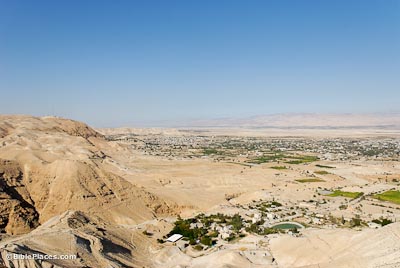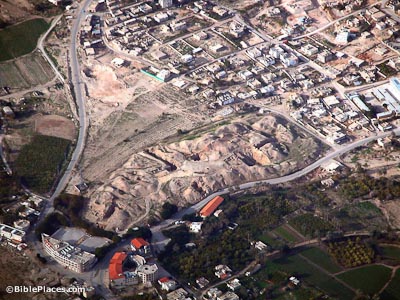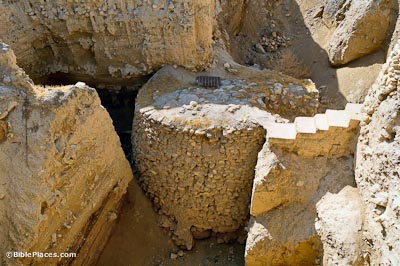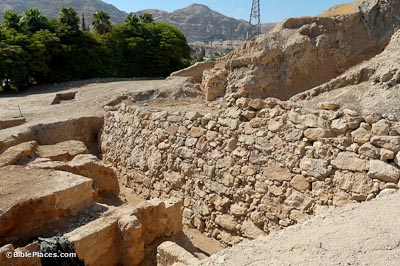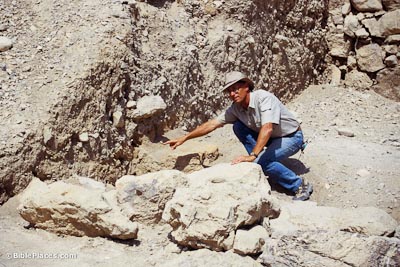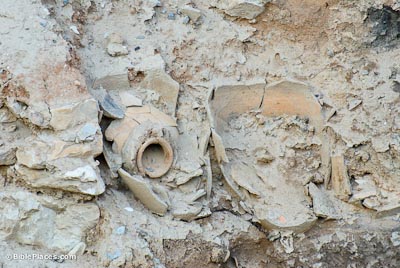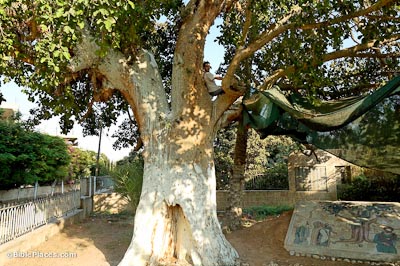Related Websites
See the related sites of the Dead Sea, En Gedi, Masada, Qumran, Qumran Caves, and the Judean Wilderness. See also historical images of Jericho and Elisha’s Spring, or our page Entering the Promised Land, at Life in the Holy Land.
For Bible chapters related to Jericho, see Joshua 3, Joshua 6, Luke 10, and Luke 19.
Early Jericho (Ancient History Encyclopedia) An encyclopedic article regarding Jericho’s history, including a map.
Jericho (Christian Answers) A brief article discussing the veracity of the story of Jericho. See this article on the website as well, specifically discussing the Bible and the walls of Jericho.
Ancient Jericho/Tell es-Sultan (UNESCO) Gives a history from a non-religious standpoint, and discusses the enduring historical value of Tell es-Sultan.
Visiting Jericho (personal travel blog) A narrative of impressions and highlights, including the ascent to the Mount of Temptation. Gives some fun cultural interactions, and includes basic photos.
Jericho (Bible Gateway) Dictionary style article giving a basic understanding of Jericho.
Jericho (Into His Own) A brief, encyclopedia-type article with multiple links to related words and topics for further study.
Jericho—Joshua’s Battle Continues Today (Wayne Stiles) Several interesting videos accompany Stiles’ discussion, which culminates in a couple devotional thoughts.
The walls of Jericho: Archaeology confirms they really did come a-tumblin’ down (Answers in Genesis Ministries) This article by Bryant Wood presents a alternate interpretation of the archaeological findings at Jericho. Illustrations serve to clarify his position.
Jericho by Don Jaques (Biblical Chronologist) An article by Wood responding to Bienkowski.
Biblical Sites: Three Discoveries at Jericho (Bible Archaeology Report) This article is especially well-illustrated, including some reconstructions and pictures of mud bricks and burnt grain jars.
Tell es-Sultan (PDF chapter) This chapter is a 30+ page discussion of Jericho’s archaeology, including numerous sketches and old photographs.
Archaeology in Israel – Jericho (The Jewish Magazine) A re-telling of the history of the site with a personal flavor. Describes many sites in Jericho, not limited to the tel.
Rahab the Harlot? (Bible History Daily) A brief look at Rahab, especially regarding whether the walls (and our current knowledge of them) shed light on her profession.
Monastery of St. George (See the Holy Land) A fascinating monastery to visit in the cliffs overlooking Jericho; this article gives history and photos.
The Incredible St. George’s Monastery (Bein Harim Tourism) Another article about this intriguing location. Find more travel information on this Times of Israel article.
